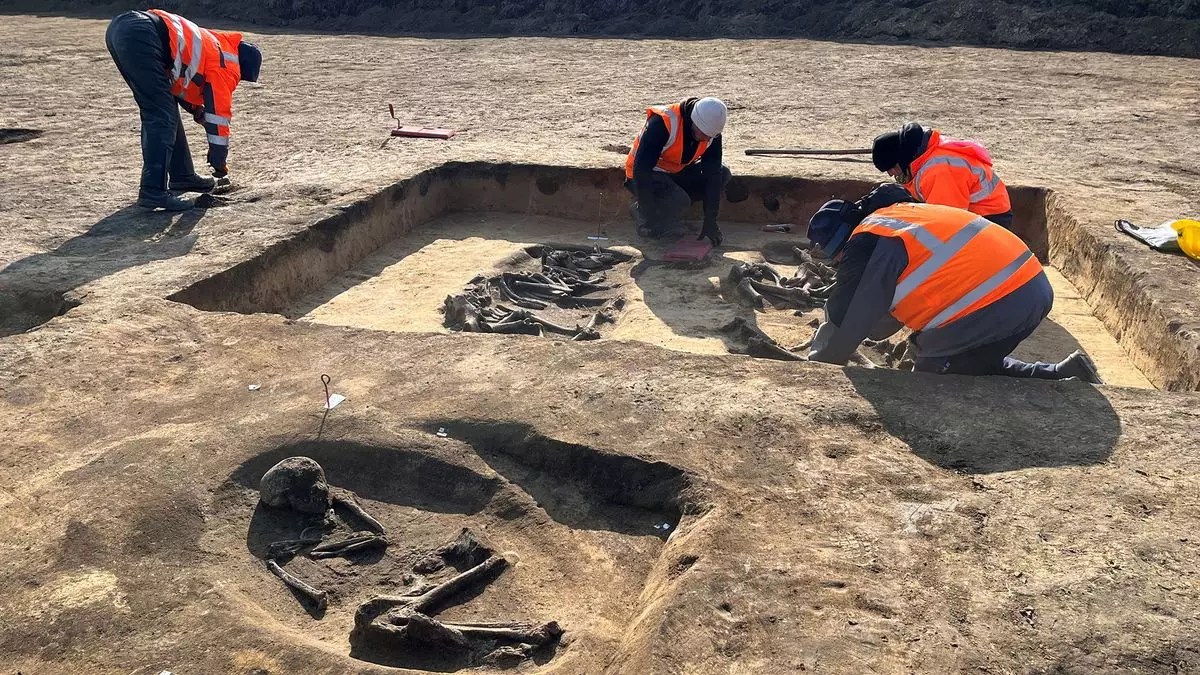Intel’s Magdeburg mega-fab in Germany holds more than just the promise of advanced technology. The site has revealed significant historical findings dating back to the Neolithic period. Archaeologists have unearthed multiple burial mounds, including a chariot burial, believed to be around 6,000 years old. Dr. Oliver Dietrich, from the State Office for Heritage Management and Archaeology Saxony-Anhalt, described the discovery of two monumental mounds with wooden grave chambers, each containing several burials. This landscape has held importance for prehistoric people over a long period of time, serving as a ceremonial route for sacrifices and burials.
Since 2023, archaeologists have been meticulously investigating the site where Intel plans to construct its largest European facility, known as the “Silicon Junction.” The industrial park, set to house a semiconductor plant producing cutting-edge chips, encompasses a complex burial and ritual landscape. The fertile soils of the Börde region made this area attractive for settlement during the early Neolithic period, leading to the establishment of burial sites and ceremonial routes over thousands of years. Intel’s construction plans entail significant groundwork, involving deep foundations and reinforced walls capable of supporting massive machinery.
As Intel’s construction equipment prepares to move in, questions arise about the fate of the burial sites uncovered during the archaeological excavations. While the State Office for Heritage Management and Archaeology Saxony-Anhalt has not provided specific details, it is likely that efforts will be made to relocate and preserve these ancient sites. The coexistence of cutting-edge technology and historical heritage presents a unique challenge, one that necessitates a delicate balance between progress and preservation. The upcoming months will be crucial in determining the approach taken towards safeguarding the unearthed relics.
The transformation of a field into a state-of-the-art semiconductor facility exemplifies the rapid pace of technological growth in the modern era. From dusty landscapes to sprawling manufacturing plants, the evolution of fabrication sites mirrors the advancements in chip production. Intel’s Magdeburg mega-fab is poised to follow this trend, with plans for gradual expansion and integration of newer manufacturing processes. The development timeline aligning with Intel’s upcoming nodes signifies a continuous cycle of innovation and progress in the semiconductor industry.
In the intersection of past and future lies Intel’s Magdeburg mega-fab, a site of archaeological significance and technological advancement. The journey from ancient burial mounds to cutting-edge semiconductor production encapsulates the overarching theme of evolution and adaptation. As Intel embarks on its construction endeavors, the echoes of the past reverberate through the layers of history, urging a thoughtful approach towards preserving heritage amidst a rapidly changing landscape of innovation. The coexistence of ancient relics and modern marvels stands as a testament to the enduring legacy of human ingenuity across different epochs.


Leave a Reply